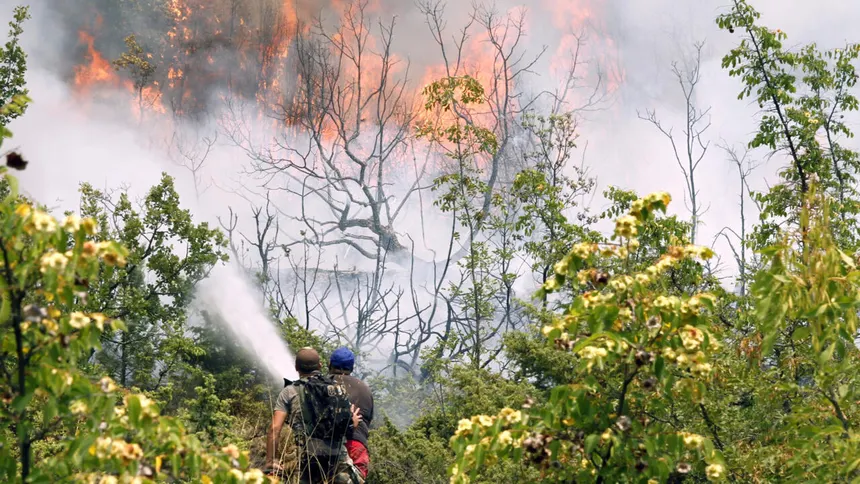By Asia Fronts Staff | April 26, 2025
The South Asian region is suffering under one of the world’s strongest heatwaves ever on record, with temperatures in the region rising to a record 49°C (120°F). The constant heat has resulted in widespread power cuts, destructive wildfires, and a mounting public health crisis.
Indian cities, Pakistan, Bangladesh, and Nepal have all suffered weeks of stifling heat, with no short-term prospect of a break. New Delhi saw temperatures break 47°C, and Jacobabad in Pakistan reached a searing 49°C, which places it among the world’s hottest spots this month.
Bubbling temperatures have overwhelmed the national power grid, prompting rolling blackouts that have put millions out of power for hours at a time. Energy officials indicate record demand for air conditioning and refrigeration, overwhelming already strained infrastructure.
At the same time, wildfires have broken out in parched forests and grasslands, especially in northern India and sections of Pakistan. Firefighters are fighting intense fires under withering conditions, with record temperatures and scarce water supplies making containment more difficult.
Hospitals across the region are reporting spikes in heatstroke, dehydration, and respiratory problems cases. Health authorities are asking people to stay indoors during the hottest part of the day, drink more fluids, and shun outdoor physical activities.
Climate experts attribute the pre-monsoon heatwaves directly to the accelerating effects of climate change. “The South Asian heatwave pattern is strengthening both in frequency and intensity,” Indian Meteorological Institute senior climatologist Dr. Anika Sharma said. “What was a rare occurrence is quickly becoming an annual crisis.”
The World Health Organization has released urgent advisories, appealing to regional authorities to institute emergency heat action plans, create community cooling facilities, and intensify public awareness campaigns.
With meteorologists predicting unabated extreme temperatures through May, authorities throughout South Asia are preparing for increased burden on public health infrastructure, food security, and water supplies over the next several weeks.
